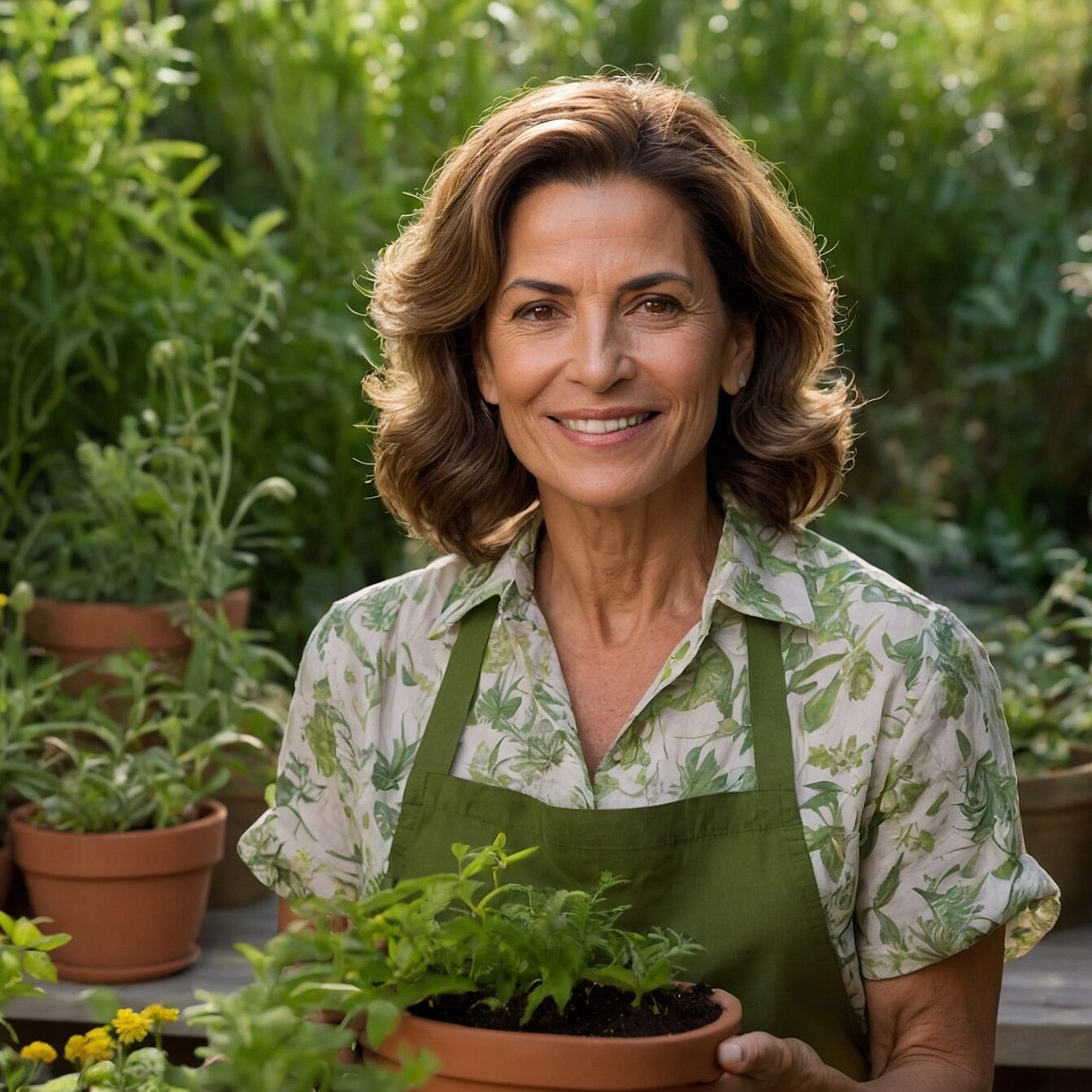Index
Presentation
From spring to autumn, the Fuchsia plant produces dozens of brilliantly colored, drop-shaped flowers, solitary or in pairs, on hanging stems, and they do so in shady conditions where most plants find it difficult to thrive. Fuchsia Plants are a fabulous addition to hanging baskets, with their elegant, pendulous flowers looking like so many crystals in an exquisite chandelier. When planting this flower in outdoor pots or directly in the garden, wait until the temperature is consistently above 10 degrees throughout the night before planting – these plants are very sensitive to cold. They have a moderate growth rate of one to two feet per year.
A welcome benefit of growing the Fuchsia plant is its attraction to hummingbirds; install a hanging basket full of fuchsias and watch for the hummingbirds to arrive.
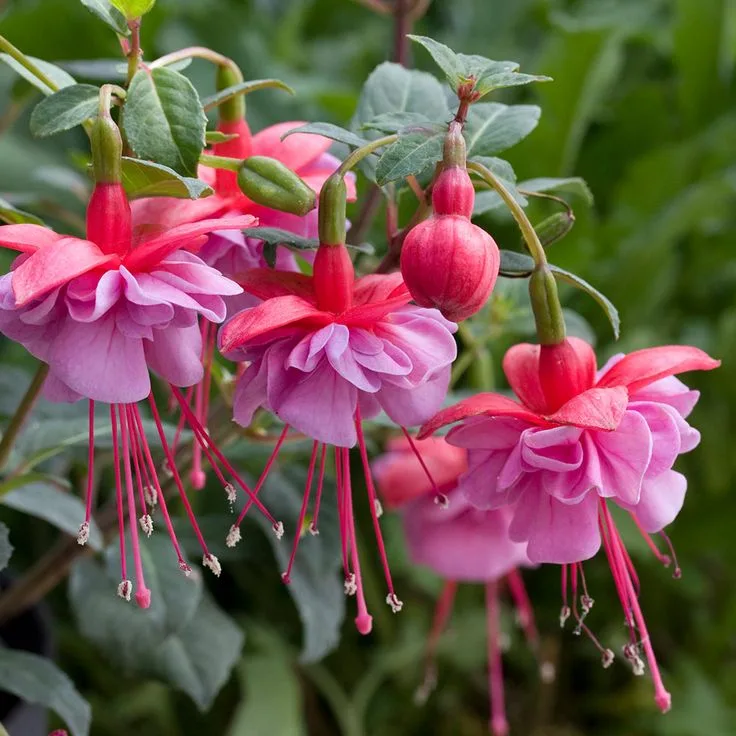
| Botanical Name | Fuchsia |
| Common Names | Lady’s Eardrops |
| Family | Onagraceae |
| Type of Plant | Shrub, annual |
| Mature Size | From 1 – 2 ft. tall, |
| Sun exposure | Partial shade |
| Soil type | Moist but well-drained soil |
| Soil pH | Neutral to acid |
| Flowering Season | Spring, summer, fall |
| Color of Flowers | Red, pink, white, violet, purple |
| Resistance Zones | Resistance zones 10 to 11 |
| Native Area | Caribbean, South America |
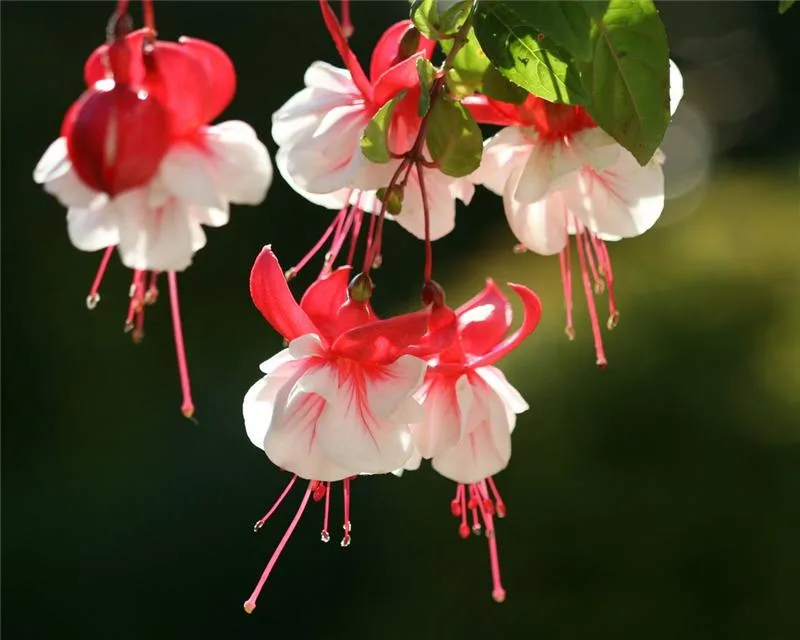
Care of the Fuchsia Plant
The genus Fuchsia contains more than 100 woody shrubs and trees, but the familiar garden fuchsias widely available in garden centers are mainly hybrids ideal for hanging baskets and other containers. Although these plants can be perennials in gardens in warm climates, Fuchsia are usually grown in pots outdoors, planted as annuals and discarded when the weather turns cold, or brought indoors and cared for under bright light and controlled conditions during the winter.
Although they are somewhat demanding when it comes to humidity and temperature, fuchsias are still considered easy-to-grow plants in container gardens. Most thrive in partial shade to full shade. They don’t like too much heat and especially hate dry heat. With the right watering regime and humidity levels, these plants become quite easy to look after.
Light
These plants thrive in conditions of partial shade to deep shade. When grown in indoor environments, they prefer a little more light – bright indirect sunlight rather than direct sunlight.
Soil
The Fuchsia plant prefers consistently moist (but not soggy) soil with a good amount of organic matter. At the same time, the soil should be well-drained. For plants in the ground, it’s a good idea to add peat or compost before planting. Container plants do well in a peat mixture for planting in pots, as long as the pot has good drainage.
Water
The Fuchsia plant likes to be moist, but not soaked. They thrive in humid environments, so if you live in a dry place, it can be a little more challenging to grow them and keep them hydrated.
Temperature and humidity
Fuchsia are happiest at temperatures between 53 and 79 ºF, although some heat-tolerant varieties can keep their flowers at temperatures of up to 90 ºF . There are also some shrub-like varieties that are resistant to freezing temperatures.
The Fuchsia plant thrives in humid environments, so if you live in a dry climate, you may need to spray your plants to keep them sufficiently moist. Keeping these plants happy indoors during the dry winter months can be a challenge, as you’ll need to use a humidifier to prevent the room from becoming too dry.
Fertilizer
During the flowering season, the Fuchsia plant has a huge appetite, so you need to feed them regularly with diluted liquid fertilizer. A combination of fish emulsion and seaweed can work well.
Types of the Fuchsia Plant
The fuchsia cultivars most often used in garden containers are divided into two categories: those with upright growth habits, ideal for large containers, and those with pendulous habits, ideal for hanging baskets. There are many dozens of different cultivars available, and your choice will depend on your preferences regarding flower color and growth habits. Consider these good options:
- ‘Swingtime‘ is a hanging variety with lacy white inner petals surrounded by bright red outer sepals.
- ‘Army Nurse‘ is a bushy, upright variety with purple petals surrounded by red sepals. It works well in large pots or as a garden plant.
- ‘Rapunzel‘ is a hanging variety with purple and pinkish-white flowers. Its stems can extend up to two feet.
- ‘Phyllis‘ is an upright variety with deep red petals surrounded by lighter pink sepals.
How to Prune the Fuchsia Plant
Regular pruning can keep fuchsia vibrant with flowers. It is also acceptable to prune it drastically. It will recover anyway and look better because of it. For hanging fuchsias, remove thin or brittle growth at any time. Shrubbier perennial fuchsias would benefit from a light trim in early fall and spring to eliminate any dead stems.
How to make a Fuchsia seedling
The Fuchsia is best propagated by cuttings taken in spring.
- Cut a two to four inch segment from the tip of the stem, cutting just above the third pair of leaves.
- Remove the lower leaves and dip the end of the cutting in rooting hormone.
- Plant the cutting in a tray or pot filled with a seedling substrate or a mixture of sand, perlite and peat.
- Cover the pot with loose transparent plastic and place it in a warm place.
- The roots should develop in three to four weeks, at which point you can remove the cover.
- When new leaf growth is evident on the cutting, you can replant the fuchsia in a larger container and take it outdoors.
How to Grow the Fuchsia Plant from Seeds
In early spring, mix peat, potting soil and vermiculite in a container suitable for indoor seedlings. Spread the seeds over the mixture, pressing them lightly, and cover them with a thin layer of potting soil. Cover the containers with transparent, flimsy plastic and provide them with bright but indirect light. Temperatures should be constant, around 24 degrees. Once the seeds have sprouted, remove the plastic cover for a few hours every day to allow the seedlings to strengthen in a lower humidity environment. When they grow their first true leaves, they will be ready for planting.
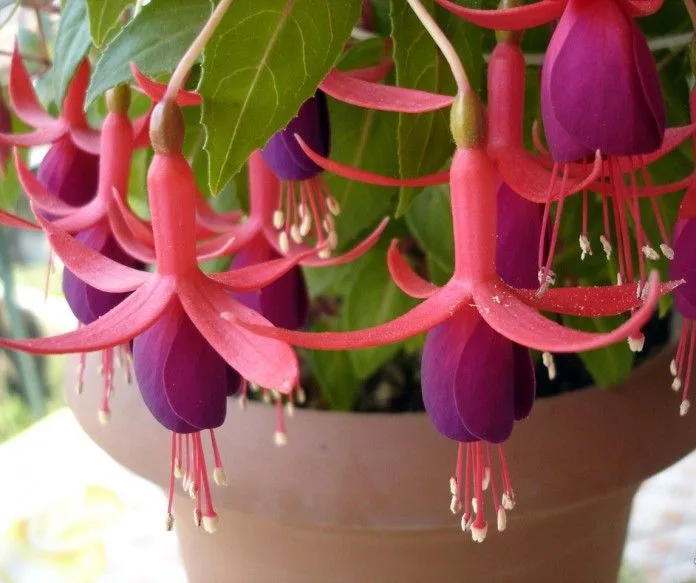
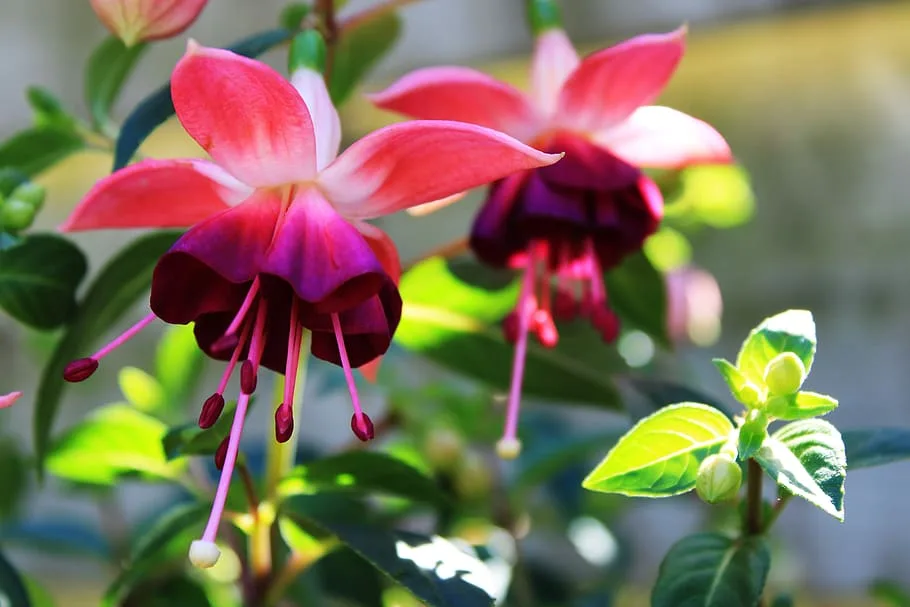
Planting and Replanting
The Fuchsia plant looks beautiful in a pot on its own, but it also goes well with complementary or contrasting colors. Display them with oxalis, angel wing begonias, lobelia or coleus.
Choose a 30 to 40 centimeter pot, depending on the size of the plant. You want a container one size larger than the one it was in at the store. Or, if you’re combining smaller plants in a single pot, two or three specimens in four-inch pots can live comfortably in a 25- or 30-centimeter pot. Here are some tips on repotting Fuchsia:
- Susceptible to root rot, fuchsias require a fast-draining potting soil with very good drainage, so make sure the containers have adequate drainage holes and the substrate drains well.
- To prevent soil from leaking out of the drainage holes when you water, place plastic sheeting over the holes before filling the pot with soil.
- Leave space between the top of the pot and the soil line. Do not fill the pot to the brim with soil.
Wintering
Many gardeners discard their potted Fuchsia plants when winter approaches. Some try to keep the plants growing indoors during the winter, but growing fuchsia requires a humid environment to be successful. Another strategy is to simply cut them back a few inches and put them in a dark, dry corner for the winter. Water just enough to keep the soil from becoming completely dry. In spring, take them back outside, where they usually recover.
Common pests for the Fuchsia Plant
The Fuchsia plant is susceptible to aphids, spider mites and whiteflies. These can be especially problematic when you bring the plants inside during the winter. Insecticidal soaps are the best option for controlling these insects.
How to Make the Fuchsia Plant Bloom
Remember that fuchsia only blooms on new growth. The moment a flower starts to fade, trim it back to allow for new growth. In most cases, you’ll be rewarded with a vibrant new flower in a matter of weeks. The Fuchsia plant can regrow in a single season if you keep trimming the flowers when necessary. If you don’t see new flowers within six weeks of pruning, cut the stem back further to the first strong node and give it more time to grow.
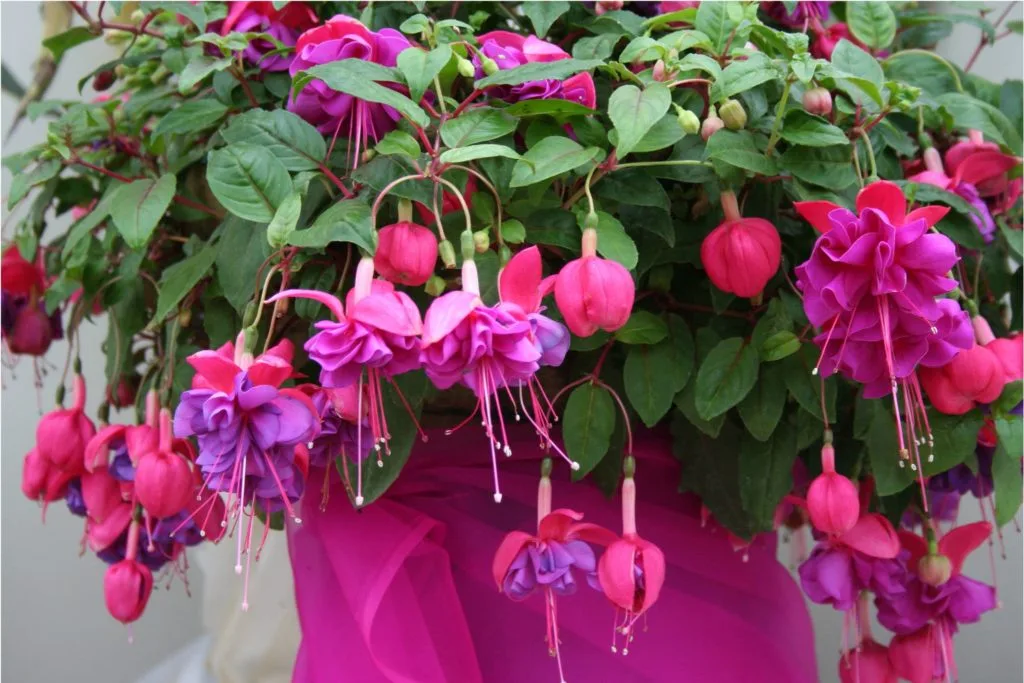
Frequently asked questions
How long can a Fuchsia plant live?
This depends on the variety. Some are perennial and can come back year after year, while others are planted as annuals. Fuchsia grown as shrubs can live for several years with proper care.
Can the Fuchsia plant be grown indoors?
It is possible to grow them indoors and is suggested as a way of protecting the plants during the winter to keep them going for the following season. However, bear in mind that they need plenty of indirect light, at the right temperatures and humidity levels, which can make growing them in indoor environments a little challenging.
How fast does the Fuchsia plant grow?
These plants have a growth rate of one to two feet per year. However, remember that you’ll be pruning the stems to encourage more flowers, so it’s unlikely that your plant will grow that much in a year.
